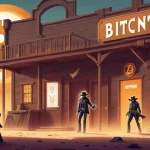XRP ETF Launch on July 18: John Deaton Celebrates, But Is It Hype or Game-Changer?

Pro-XRP Lawyer John Deaton Hails July 18 XRP ETF Launch: A Game-Changer or Hype?
July 18 is poised to be a pivotal moment for XRP, with ProShares set to launch its futures-based XRP ETF on the NYSE Arca. Pro-XRP lawyer John Deaton is already popping the champagne, framing this as a massive win for free markets after years of regulatory battles. But amidst the buzz, is this truly a turning point for the altcoin, or just another speculative sideshow in the crypto circus?
- ETF Debut: ProShares Ultra XRP ETF launches July 18, offering 2x leveraged exposure via futures.
- Legal Milestone: 2022 ruling that XRP isn’t a security sparks institutional interest.
- Price Volatility: XRP dips 2% to $2.87 despite 25% weekly gains fueled by ETF speculation.
The ProShares XRP ETF: What’s Landing on July 18?
The upcoming ProShares Ultra XRP ETF, trading under the ticker UXRP, marks a significant step for XRP’s mainstream adoption. As confirmed by SEC filings and its listing on the Depository Trust & Clearing Corporation (DTCC) eligibility roster, this isn’t a spot ETF where investors directly own XRP. Instead, it’s a futures-based fund, meaning it tracks XRP’s price through derivatives—essentially agreements to buy or sell at a future date and price. This setup provides 2x leveraged daily exposure, amplifying both gains and losses for traders chasing quick profits.
Think of leveraged ETFs as financial rocket fuel: thrilling for a short burst, but catastrophic if you don’t know the controls. Due to daily rebalancing, these funds can erode value over time—a phenomenon often called volatility decay. It’s like losing a bit of gas every day on a long road trip; small leaks add up. ProShares is also planning two inverse ETFs—Short XRP ETF (XRPS, -1x exposure) and UltraShort XRP ETF (RIPS, -2x exposure)—tentatively set for the same date, pending final clearances. These allow investors to profit when XRP’s price drops, potentially drawing speculative sharks and spiking market volatility.
For retail investors, the warning is loud and clear: these aren’t toys for casual dabblers. Leveraged and inverse ETFs are built for day traders or hedge funds with deep pockets and high risk tolerance. History shows leveraged products can wipe out accounts fast—look no further than past crypto ETF mishaps or even traditional market disasters like the 2020 oil futures ETF debacle. If you’re not glued to the charts, you’re playing a dangerous game.
Ripple’s Legal Saga: Clearing the Path for ETFs
XRP’s journey to this point reads like a gritty courtroom drama. In December 2020, the U.S. Securities and Exchange Commission (SEC) hit Ripple Labs with a lawsuit, alleging that XRP sales were unregistered securities offerings. The blow sent XRP’s price into a tailspin and cast a shadow over its future. John Deaton’s advocacy for the community rallied 75,000 XRP holders through an amicus brief to fight the classification. Their efforts bore fruit in 2022 when Judge Analisa Torres ruled that XRP itself is not a security, though certain sales by Ripple executives still fell under securities law. This partial victory provided the regulatory clarity institutions needed to start engaging with XRP.
Implicit in Deaton’s recent remarks on X is the belief that the launch of XRP ETFs, just two years after the non-security ruling, stands as “a big win for the free markets.”
Fast forward to today, and the legal battle might be nearing its end. Ripple recently dropped its cross-appeal in the ongoing case, a move that signals a potential truce. There’s chatter that the SEC, following a key meeting on July 10, might dismiss its own appeal—a development that could dismantle major barriers to XRP’s growth. Dropping cross-appeals essentially means both sides are stepping back from further legal escalation, possibly agreeing to settle on current rulings. Market expert Nate Geraci views this as a direct boost for spot XRP ETF approvals, while Bloomberg analysts James Seyffart and Eric Balchunas peg a 95% chance of such approvals by the end of 2024. If this pans out, it could unlock direct XRP ownership through regulated products, a much bigger deal than futures-based funds.
Market Realities: XRP’s Price Rollercoaster
Despite the excitement, XRP’s price tells a mixed story. Currently trading at $2.87, it’s down 2% over the past 24 hours, even as weekly gains hit 25% on the back of ETF buzz and legislative developments. This kind of whiplash isn’t new for crypto—sentiment flips faster than a meme coin scam. The daily dip could stem from profit-taking after the weekly surge or broader market jitters. Historically, XRP has seen sharp corrections following big news, like after the 2022 ruling when initial pumps faded into sideways trading. Without sustained momentum, this ETF launch celebrated by John Deaton might not be the magic bullet holders hope for.
Global Context: Canada’s Spot XRP ETF Success
While the U.S. plays catch-up, Canada is already miles ahead. Asset manager 3iQ launched a Ripple-backed spot XRP ETF on June 18, and it’s racked up over $50 million in client assets in just a month. Unlike futures-based funds, spot ETFs hold the actual asset, giving investors direct exposure without the complexity of derivatives. This milestone screams demand—investors are hungry for XRP and its underlying technology, and Canada’s progressive stance on crypto products is paying off.
“This significant milestone for [our XRP ETF] demonstrates the continued strong interest in these assets,” said Pascal St-Jean, CEO of 3iQ, in a post on X.
Canada’s success could be a blueprint—or a taunt—for U.S. regulators. If the SEC drags its feet on spot ETFs, American investors might look north or to offshore exchanges, amplifying pressure for quicker approvals. It also hints at global appetite; if XRP gains traction in one market, others often follow, potentially solidifying its role in cross-border finance.
Risks and Rewards: Navigating Leveraged XRP ETFs
Let’s cut the crap—these leveraged ETFs aren’t for everyone. Designed for short-term plays, they cater to day traders and institutional players who can stomach wild swings. Retail investors jumping in without understanding daily rebalancing risk getting burned. Imagine betting on a horse that resets its speed every day; even if XRP trends up, the fund’s structure can erode returns over weeks or months. Inverse ETFs add another layer of gamble—profiting from XRP’s decline sounds slick until a sudden rally wipes out your position. For deeper insights, consider exploring risks associated with leveraged XRP investments.
Who’s the target here? Hedge funds, speculative traders, and maybe savvy crypto whales. For the average Joe, sticking to spot exposure—whether through direct XRP purchases or future spot ETFs—might be saner. The cautionary tales are plenty: leveraged funds in volatile markets have historically led to massive losses, especially in crypto’s unpredictable waters. Proceed with eyes wide open.
Bitcoin vs. XRP: A Clash of Ideals
Now, let’s tackle a thorny issue for some in the crypto space—does XRP’s spotlight steal thunder from Bitcoin’s crown? As a Bitcoin maximalist at heart, I’ll play devil’s advocate: XRP’s centralized origins through Ripple clash with the cypherpunk ethos of decentralization that Bitcoin embodies. While Bitcoin stands as a defiant store of value, XRP’s focus is utilitarian—think cross-border payments via Ripple’s partnerships with banks like Santander or remittance firms like MoneyGram. ETFs for altcoins might diversify the landscape, but could a flood of such products fragment capital or dilute the mission of building a truly sovereign financial system?
If XRP ETFs succeed, we might see a rush of altcoin funds, from Cardano to Solana, each vying for Wall Street’s attention. On one hand, this could legitimize crypto as an asset class; on the other, it risks turning the space into a speculative casino, overshadowing Bitcoin’s primacy. Yet, XRP’s niche—fast, cheap transactions—fills a gap Bitcoin isn’t designed for. Perhaps coexistence, not competition, is the real path forward. Community reactions to this can be found in ongoing discussions about the XRP ETF launch.
Legislative Tailwinds and Regulatory Headwinds
The timing of this ETF launch adds another layer of intrigue, aligning with “Crypto Week” in Washington, D.C. Lawmakers are debating bills like the Clarity Act, aimed at defining crypto regulations, and the Anti-CBDC Surveillance State Act, pushing back against centralized digital currencies. A favorable outcome could supercharge attention on XRP and altcoins, reinforcing the narrative of decentralized finance disrupting the status quo. But don’t hold your breath—political fumbles or regulatory delays could just as easily douse the flames. The SEC’s track record under current leadership shows a deep skepticism of crypto innovation, often prioritizing investor protection over progress. This tug-of-war between freedom and control remains the backdrop for XRP’s ongoing regulatory challenges.
Key Takeaways and Questions for XRP’s Future
- What’s the significance of July 18 for XRP?
It’s the launch date for ProShares’ Ultra XRP ETF, a futures-based fund with 2x leveraged exposure, potentially drawing significant capital into the XRP ecosystem. - Why does the 2022 non-security ruling matter so much?
Judge Torres’ decision that XRP itself isn’t a security provided regulatory clarity, encouraging institutional players to develop products like ETFs without legal overhang. For more on this ruling, check John Deaton’s insights on the case. - How do futures-based ETFs differ from spot ETFs for XRP?
Futures-based ETFs track XRP’s price through derivatives and contracts, while spot ETFs would hold actual XRP, offering direct exposure with fewer structural risks. - Could the Ripple-SEC lawsuit resolution fast-track XRP ETFs?
Yes—Ripple dropping its cross-appeal, and the SEC possibly following, could remove legal roadblocks, boosting the odds of spot ETF approvals in 2024. Read more about this latest development in the lawsuit. - Who should consider investing in leveraged XRP ETFs?
Only experienced day traders or institutions with high risk tolerance; retail investors risk heavy losses due to daily rebalancing and volatility. - How does XRP’s utility differ from Bitcoin’s mission?
XRP focuses on efficient cross-border payments through Ripple’s financial partnerships, while Bitcoin prioritizes decentralized wealth storage, often at odds with centralized systems. - Are XRP ETFs a distraction from crypto’s core ethos?
Possibly—for Bitcoin purists, altcoin ETFs might shift focus from true decentralization, but they could also broaden adoption by meeting diverse financial needs.
July 18 could well be the spark XRP needs to cement its place in the financial revolution, blending regulatory wins with innovative products. Deaton’s cheers resonate as a hard-fought victory after years of uncertainty, yet the road ahead isn’t all sunshine. Leveraged ETFs carry brutal risks, regulatory whims could spoil the party, and market sentiment remains as fickle as ever. As XRP steps into the spotlight, a bigger question looms: are we crafting a freer financial future, or just handing Wall Street new toys to play with? For now, the stage is set—let’s see if XRP can steal the show.



